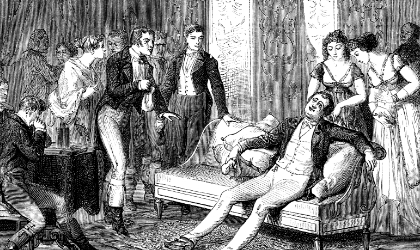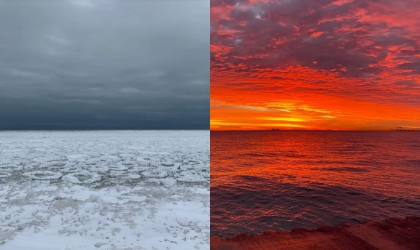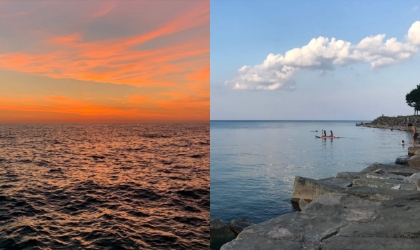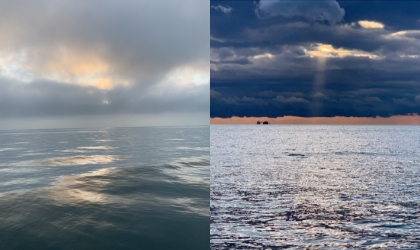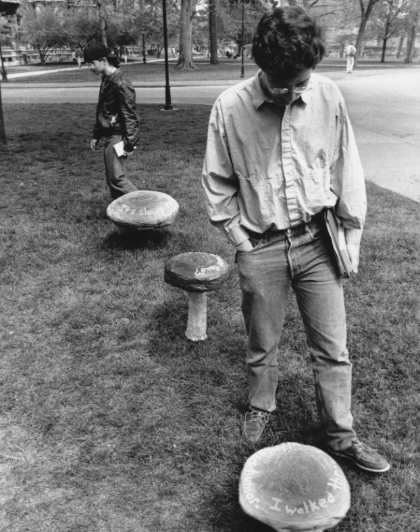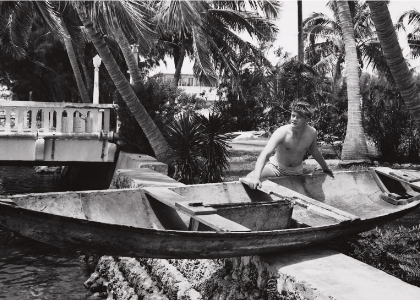|
|
|
|
|
|
|
|
|
|
|
|
|
|
| Welcome to The Conquest of Pain! |
|
| |
|
|
|
| A 1799 experiment with nitrous oxide. |
|
| |
|
| “Welcome to BIOS 24217, The Conquest of Pain!” reads the first sentence of Keith Ruskin’s syllabus. Among the notable characteristics of the popular biology/neuroscience course: Ruskin’s extreme enthusiasm, the long list of guest lecturers, and the chance to shadow Ruskin, professor of anesthesia and critical care, during actual surgeries. |
|
| |
|
| Today’s guest lecturer, Ming Xu, professor of anesthesia and critical care, is speaking on drug addiction, as well as a novel treatment he helped develop that Ruskin says “will revolutionize” how addiction is treated. |
|
| |
|
| Xu walks the class through the most commonly abused categories of drugs. Opiates and opioids (opiates are derived from the opium poppy, while opioids are synthetic). Alcohol. Nicotine. Psychomotor stimulants (cocaine, amphetamine, methamphetamine). Cannabinoids. And finally club drugs (LSD, MDMA, GHB). |
|
| |
|
| Some of these drugs, Xu notes, have medical and other uses. Amphetamine is used by fighter pilots, for example, to increase focus and energy. “There are two drugs that are used in the military as ‘go’ pills,” Ruskin interjects: amphetamine and, increasingly, modafinil. (Ruskin, a fellow of both the Aerospace Medical Association and the Royal Aeronautical Society, is an expert on aerospace medicine.) |
|
| |
|
| Each squadron of pilots has a flight surgeon who issues pills “to take under extenuating circumstances only,” he explains. But first, pilots are required to take them while on the ground to judge the effects, because the drugs can cause aggression. “The last thing you want,” Ruskin says, “is an aggressive, emotional fighter pilot.” |
|
| |
|
|
|
|
|
| Your start-up will probably fail |
|
| |
|
| |
| |
“ |
|
| |
Most likely your college start-up will fail. Not that you shouldn’t try, because maybe yours is Facebook.
But what I mean is, as College students, we haven’t really failed yet. And when your start-up fails, it’s going to suck, but the next thing is always better. |
|
|
|
|
|
|
| |
—Richard Wu, AB’19, product manager, Woflow |
|
|
|
| |
|
|
|
|
|
|
|
|
|
| Last academic year six College students—Esha Deokar, Class of 2023; Natalie Jenkins, Class of 2024; Naomi Koo, Class of 2024; Kina Takahashi, Class of 2024; Oscar Taub, Class of 2023; and Jess Xiong, Class of 2025—cocurated the public art project 100 Views of Lake Michigan, inspired by Hiroshige’s series of woodblock prints Thirty-six Views of Mount Fuji. |
|
| |
|
|
|
| From a crowdsourced collection of almost 1,000 photos, the student curators chose 100 images. The one commonality: a horizon line bisecting the image. |
|
| |
|
|
|
| The photos were displayed in the Stuart Hall Reading Room, in residence halls, and on lamppost banners (they started out with 100, says Laura Steward, curator of public art, but some were stolen). The photos were also printed on laptop stickers and coffee cups: “a way for students to bring art along with them wherever they go,” according to the project’s website. 100 Views of Lake Michigan was the first of an annual series of public art projects directed by Steward and artist-designer Jason Pickleman. |
|
| |
|
|
|
|
|
|
|
|
|
| An art installation by Logan White, EX’95. |
|
| |
|
|
|
|
|
|
|
| Alumni question from the July issue: What was your College admissions experience like? |
|
|
|
|
| |
|
In 1956 I took the University’s entrance exam. The multiple-choice exam was really tough, including questions that began with a set of boundary conditions and asked 20 or so questions based on these conditions. As I recall, the toughest described the properties of “k numbers,” noting it wasn’t necessary to know what a k number actually was. I was admitted and invited, with my parents, to an assembly for entering students. When the dean announced I had scored the highest, my mother clutched her pearl necklace so hard that it broke. I walked up to receive a congratulatory handshake with loose pearls tumbling down the aisle.—Michael Edidin, SB’60 |
|
|
| |
|
| |
|
I was a cocky kid, all of 16, when I graduated. I felt sure that being third in my class at the High School of Music and Art in New York City, with lots of activities (including student government president), would get me into Harvard. Since a couple of classmates had gone to Chicago, where they were getting a good education, I applied there, as well as Brandeis and Amherst. Imagine my consternation when I went 0 for 4. No admissions, two waitlists: Harvard and Chicago. |
|
|
| |
|
| |
|
Since I hadn’t yet visited Chicago, that was my first stop. I showed up, hat metaphorically in hand, and explained why I thought Chicago would be a good match. Perhaps the legacy of taking youngsters helped nudge me over the finish line. The day after I returned home, a telegram arrived—the only telegram I ever received in my life—inviting me to be part of the Class of 1973.—Steve Mencher, AB’73 |
|
|
| |
|
|
|
| Previously in College Review |
|
| |
|
|
|
|
|
|
|
|
|
|
|
| The College Review, edited by Carrie Golus, AB’91, AM’93, is brought to you by Alumni Relations and Development and the College. Image credits: iStock/ilbusca; 100 Views of Lake Michigan; UChicago Photographic Archive, apf7-05649; Mariners’ Museum and Park. |
|
| |
|
|
|
|
|
